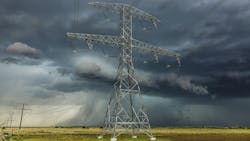At last week’s PJM summit in Philadelphia, I had the opportunity to listen, share and engage with state leaders and stakeholders about the core challenges facing our region’s energy ecosystem. Hoping to gain some acknowledgment and reassurance that positive change was coming, I unfortunately left that meeting alarmed at the lack of concrete solutions and urgency to address affordability and supply concerns that are straining our customers and our energy grid.
As the largest utility in PJM’s territory, serving more than 10.7 million customers, Exelon sees firsthand the impact of the current environment on those we serve. Rising prices are hard for households to navigate, and customers — our friends and neighbors — are rightfully frustrated and demanding solutions.
Alongside increasing costs are PJM admissions that threats to service reliability are close behind. Just this year, PJM Executive Director of State Government Policy Jason Stanek called Maryland’s energy outlook “dire,” and the operator requested an emergency order with the U.S. Department of Energy for an “imminent electric reliability emergency” in BGE’s territory.
Without new supply sources, customers will continue to face rising, unpredictable costs that are already stretching finances and will be at greater risk of brownouts. It’s time for us to come together to identify and implement real solutions. Allowing utilities to produce energy and add it directly to the grid, a process known as regulated generation, must be at the top of the list.
Our customers are counting on us to meet this moment by reigning in costs and providing certainty that needed supply will be planned and built. We are already using the tools we currently have available, whether demand response, energy efficiency, enabling distributed energy resources, or building transmission to connect new supply resources. Regulated generation will help us fill in where the market response has been flat-footed and as a complement to the PJM market.
A Deep Supply Challenge
At the heart of today’s crisis is PJM’s gap between energy supply and demand. PJM does not have enough energy to meet current needs — and demand will only grow in the coming years as data centers come online and the electrification process continues. This gap sends prices for limited resources soaring and jeopardizes our ability to deliver reliable energy service. As an example, customers across PJM are forced to pay over $16 billion for the latest capacity auction, even though it resulted in less overall supply than the year before
We’re already feeling the effects that insufficient supply has on the costs utilities, such as Exelon, pay for electricity. Year-to-date supply portions of PJM's total wholesale costs are up over 60% compared to the same period in 2024. For comparison, transmission costs across PJM increased by only 5%.
Reduced supply also leaves customers vulnerable to power outages and rolling blackouts, especially during extreme weather events.
Proposed projects to address this shortfall are limited, and many are already stalled due to permitting, financial or supply chain challenges. PJM-approved projects that could power 40 million homes are currently stuck in limbo — failing to help customers struggling with higher bills.
The discussion at the recent summit clarified for me that the current system is unprepared to deliver solutions. Instead of acknowledging this acute supply and generation problem and taking accountability for our responsibility to address it on behalf of customers, I heard circular debates about governance and defense of the status quo and attempts to normalize high prices that will only perpetuate inaction.
Right now, no one is accountable for making sure there’s enough energy supply — not PJM, not the Federal Energy Regulatory Commission, not the North American Electric Reliability Corporation, and not the states — and customers are paying the price.
Regulated Generation Will Enhance Supply and Affordability
To overcome supply shortfalls, states must allow utilities to produce the energy and lower prices our customers need when the market fails to deliver. Regulated generation will provide needed cost relief, establish certainty that new sources will be built — instead of languishing in the permitting process or failing to be proposed — and allow each state to align generation plans with their policy goals.
PJM's proposed solution would require forced curtailments of new large loads. This approach is equivalent to throwing in the towel – saying that new supply is too hard to build in PJM, even though other regions have figured out how to build in this moment. Supporting economic development and helping PJM’s 13 states and the District of Columbia grow requires real supply solutions.
By expanding supply through complementary regulated generation approaches, we can reduce costs and minimize volatility, delivering the long-term relief and predictability families and businesses expect. We can also ensure new generation sources are completed by making utilities responsible for the capacity needed to serve their customers, all under state oversight.
While current power producers are unable to meet demand in the PJM region and meaningfully expand capacity, Exelon is ready to invest in new power sources as part of our commitment to providing essential energy services to the communities we serve.
Allowing the supply challenge to continue unchecked treats electricity as a commodity. But families adjusting the heat to stay comfortable and businesses keeping their lights on know it’s more than that – it’s a necessity.
Customers deserve a system that treats them as such. That’s what regulated generation delivers, and the promise Exelon is ready to keep.
About the Author
Will Sauer
Will Sauer is Vice President of Federal Regulatory Affairs for Exelon.

